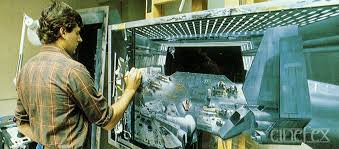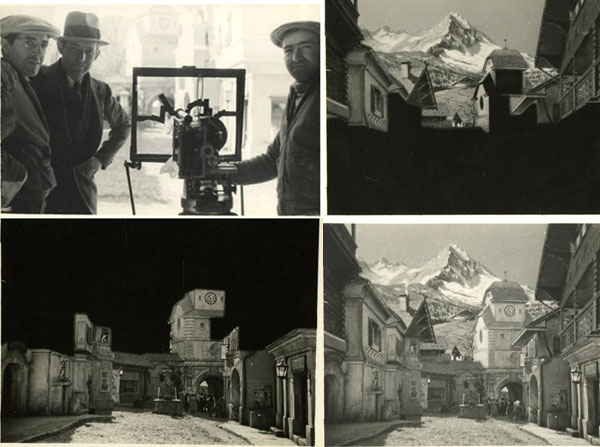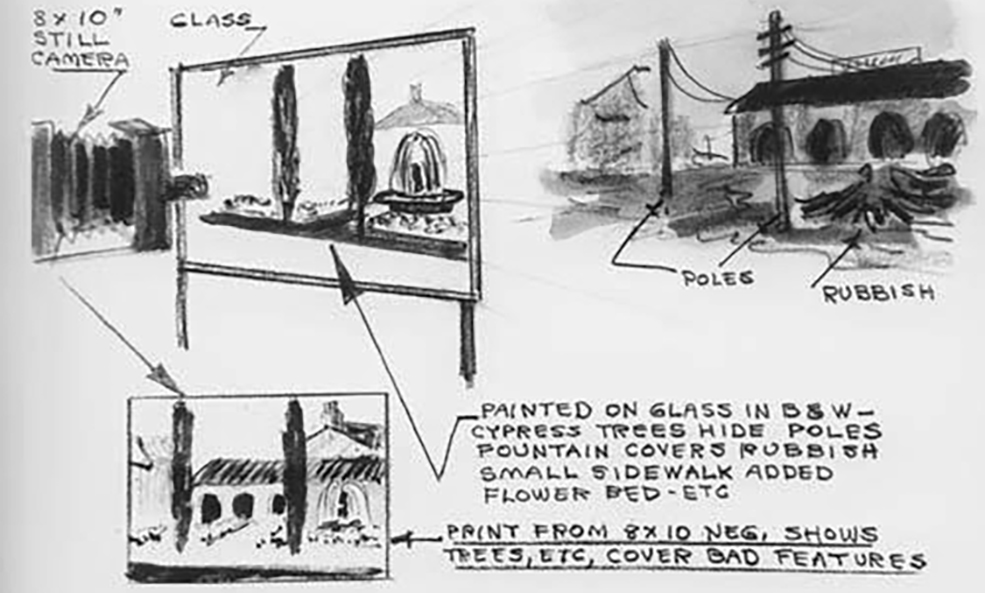

01 Nov Matte painting-ARD 516
A matte painting is a painted representation of a landscape, set, or distant location that allows filmmakers to create the illusion of an environment that is not present at the filming location. Historically, matte painters and film technicians have used various techniques to combine a matte-painted image with live-action footage (compositing). At its best, depending on the skill levels of the artists and technicians, the effect is “seamless” and creates environments that would otherwise be impossible or expensive to film. In the scenes the painting part is static and movements are integrated on it.


Traditionally, matte paintings were made by artists using paints or pastels on large sheets of glass for integrating with the live-action footage. The first known matte painting shot was made in 1907 by Norman Dawn (ASC), who improvised the crumbling California Missions by painting them on glass for the movie Missions of California. Notable traditional matte-painting shots include Dorothy’s approach to the Emerald City in The Wizard of Oz, Charles Foster Kane’s Xanadu in Citizen Kane, and the seemingly bottomless tractor-beam set of Star Wars Episode IV: A New Hope. The first Star Wars documentary ever made (The Making of Star Wars, directed by Robert Guenette in 1977 for television) mentioned the technique used for the tractor beam scene as being a glass painting.
By the mid-1980s, advancements in computer graphics programs allowed matte painters to work in the digital realm. The first digital matte shot was created by painter Chris Evans in 1985 for Young Sherlock Holmes for a scene featuring a computer-graphics (CG) animation of a knight leaping from a stained-glass window. Evans first painted the window in acrylics, then scanned the painting into LucasFilm’s Pixar system for further digital manipulation. The computer animation (another first) blended perfectly with the digital matte, which could not have been accomplished using a traditional matte painting.





Sorry, the comment form is closed at this time.